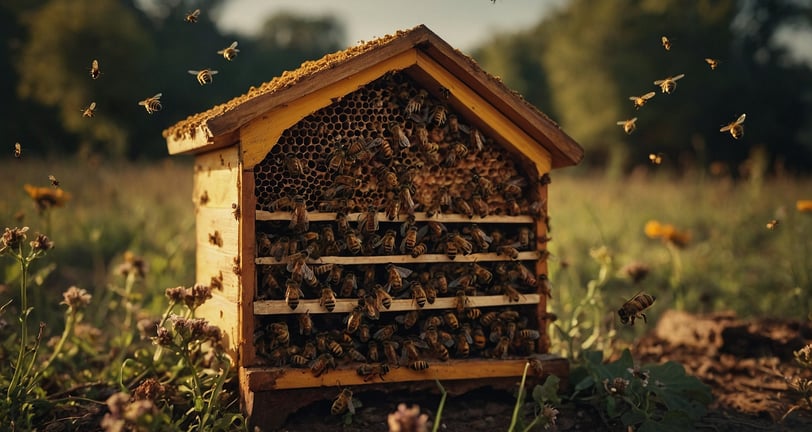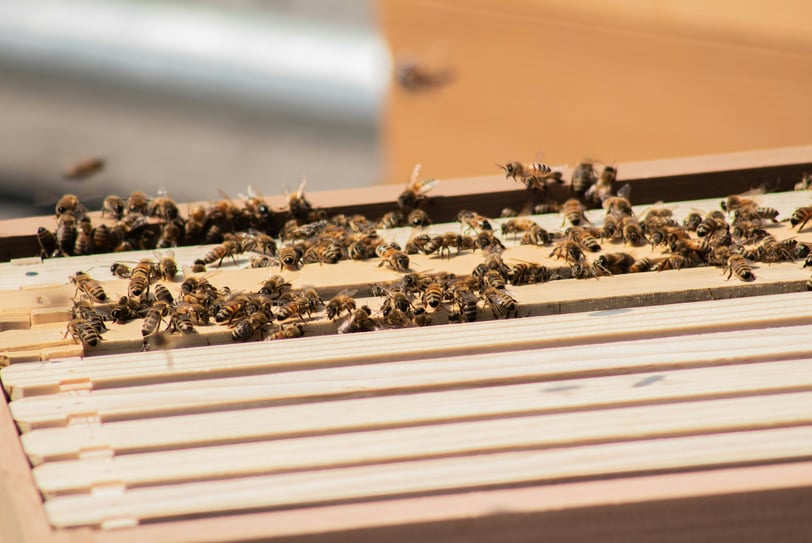Durable Wooden Bee Hives for Backyard Bees
Discover the benefits of wooden bee hives, including durability, natural insulation, and sustainability. Learn tips for maintenance and choosing the perfect hive design.


Wooden bee hives have long been a popular choice for beekeepers, offering a natural and durable option for housing bee colonies. Whether you’re an experienced apiarist or just starting out, understanding the benefits and challenges of using wooden bee hives is essential. Create your own beehive and other projects with step-by-step guides to enhance your beekeeping journey and ensure long-term success. In this article, we will explore why wooden bee hives are an excellent choice for beekeepers, how to maintain them properly, and the various factors to consider when choosing the right hive for your bees.
Why Choose Wooden Bee Hives?
When it comes to bee hive materials, wood has proven to be one of the best options for housing bee colonies. Wooden bee hives have numerous advantages, making them a top choice for both hobbyist and commercial beekeepers.
Natural Insulation One of the main benefits of using wooden bee hives is their natural insulating properties. Wood is an excellent material for regulating the internal temperature of the hive, keeping it cool in the summer and warm in the winter. This helps the bees maintain a stable environment, promoting healthy growth and honey production.
Durability Wooden bee hives are built to last. The material is naturally strong and weather-resistant, ensuring that your hive will stand up to the elements for many years. While some synthetic hive options may degrade or crack under the sun’s heat or the cold of winter, wooden hives can withstand these changes in weather, protecting the bees inside.
Breathability Wood is a breathable material that allows the hive to release excess moisture. This is essential for maintaining proper humidity levels inside the hive, preventing issues like mold growth or fungal infections, which can negatively impact bee health.
Ease of Construction Wooden bee hives are relatively easy to build or assemble. Many beekeepers enjoy constructing their own hives, as wood is a versatile material that can be customized to fit specific needs. This flexibility allows beekeepers to choose the best design for their colony's size and environment.
Sustainability Using wooden bee hives is an environmentally friendly option, as wood is a renewable resource. When sourced responsibly, it’s a sustainable choice that supports eco-friendly practices. Additionally, wooden hives can often be repurposed or repaired if they become damaged, further reducing waste.
Types of Wooden Bee Hives
There are various designs of wooden bee hives, each with its unique features. The most common types of wooden bee hives include:
Langstroth Hive The Langstroth hive is one of the most widely used wooden bee hives in beekeeping. It features a stackable design with removable frames, making it easy for beekeepers to inspect the hive and harvest honey. This type of hive allows bees to build their colonies vertically, creating a well-organized structure that’s easy to manage.
Top Bar Hive The top bar hive is another popular design, particularly for those who prefer a more natural approach to beekeeping. Unlike the Langstroth hive, top bar hives do not use frames. Instead, bees build their honeycombs directly on the bars. This design makes it easier for beekeepers to manage the hive without disturbing the bees too much.
Warre Hive The Warre hive is a vertical design that resembles a modified version of the Langstroth hive. However, it differs in that it uses smaller boxes and less intervention from the beekeeper. The goal of the Warre hive is to mimic a bee’s natural environment, promoting a more sustainable and low-maintenance approach to beekeeping.
Flow Hive A relatively new innovation, the Flow Hive incorporates elements of the Langstroth design with a unique feature that allows honey to be harvested without disturbing the bees. This hive includes special frames with a mechanism that enables honey to flow directly into jars when turned, reducing the need for extraction equipment.
Learn more about creating wooden bee hives and explore other exciting projects today!


Maintaining Wooden Bee Hives
Proper maintenance is crucial for ensuring the longevity and success of wooden bee hives. Regular upkeep will help protect the hive from damage and ensure the bees thrive inside. Here are some tips for maintaining wooden bee hives:
Regular Inspections Beekeepers should inspect wooden bee hives regularly to monitor the health of the colony. Look for signs of disease, pests, or improper conditions inside the hive. Regular checks can also help ensure that the hive is well-organized and that bees have enough space to build their combs.
Protection from the Elements While wooden bee hives are naturally weather-resistant, it’s still important to protect them from extreme weather conditions. Using a protective coat of non-toxic paint or beeswax can help extend the life of the wood and prevent deterioration. Additionally, placing hives in a shaded area can protect them from overheating in hot weather.
Preventing Moisture Buildup Excess moisture in the hive can create an environment for mold or fungi, which can harm the bees. Ensure proper ventilation in the hive to prevent moisture buildup. Some beekeepers add a moisture board to the top of the hive to absorb excess humidity during the winter months.
Repairs and Replacements Over time, wooden bee hives may show signs of wear and tear. Cracked or damaged wood should be repaired or replaced promptly to avoid compromising the structural integrity of the hive. A well-maintained hive ensures the safety and health of the colony.
Challenges of Wooden Bee Hives
While wooden bee hives offer many advantages, they also come with some challenges. Beekeepers should be aware of these potential drawbacks when choosing wooden hives.
Pest and Insect Infestations Wooden bee hives are vulnerable to pests like ants, termites, and wood-boring insects. These pests can damage the hive and potentially harm the bees. Regular maintenance and proper placement of the hive can help minimize the risk of infestations.
Weight Wooden bee hives can be heavy, especially when filled with honey and occupied by bees. Moving these hives can be challenging, particularly for beginner beekeepers or those with multiple hives. It’s important to consider the weight when setting up or relocating the hives.
Cost High-quality wooden bee hives can be more expensive than other materials, especially if the hive is custom-built or made from premium wood. However, the investment is often worth it due to the durability and longevity of the material.
Maintenance Needs Wooden bee hives require more maintenance compared to synthetic hives. Regular treatment and care are necessary to protect the hive from the elements and ensure it remains structurally sound. This additional work can be time-consuming for beekeepers, especially those with multiple hives.
Choosing the Right Wooden Bee Hive
When selecting a wooden bee hive, it’s important to consider factors such as your beekeeping experience, the climate, and the type of bees you are working with. For beginners, a Langstroth or top bar hive may be a good choice due to their simplicity and ease of use. Experienced beekeepers may prefer a Warre hive or a Flow Hive for a more natural approach.
Additionally, consider the type of wood used for the hive. Cedar and pine are two common options, both offering good durability and weather resistance. Cedar is often preferred for its natural resistance to pests, while pine is more affordable and readily available.
If you’re interested in expanding your beekeeping knowledge, consider taking on a project where you can create your own beehive and other projects to enhance your experience and deepen your understanding of beekeeping.
Wooden bee hives are a reliable and effective option for housing bee colonies. They offer numerous benefits, including natural insulation, durability, and sustainability. While there are challenges associated with wooden hives, such as pest infestations and maintenance needs, the advantages outweigh the drawbacks for many beekeepers. By choosing the right wooden bee hive and performing regular maintenance, you can provide your bees with a safe and healthy environment to thrive.
